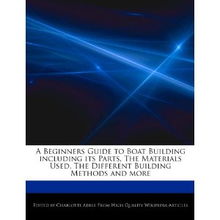Content:
Fishing is an ancient pastime that has been enjoyed by countless individuals around the world. Whether you're looking to unwind, bond with family and friends, or even catch a big catch, fishing can be a fulfilling activity. However, for beginners, the world of fishing rods and techniques can seem overwhelming. Don't worry; with this comprehensive guide, you'll be well on your way to mastering the art of fishing rod techniques. Here's everything you need to know to get started.

Understanding the Basics of a Fishing Rod
Before diving into the fishing rod techniques, it's crucial to understand the basic components of a fishing rod. A typical fishing rod consists of the following parts:
- Handle: The part you hold while fishing.
- Guides: Small rings that help guide the line through the rod.
- Butt: The thick end of the rod, which is often made of heavier material.
- Tip: The thin end of the rod, which is sensitive to the slightest movements of the fish.
- Blank: The hollow tube that runs through the rod, which is where the fishing line is attached.
Choosing the Right Fishing Rod
Selecting the right fishing rod is essential for a successful fishing experience. Here are some factors to consider when choosing a fishing rod:
- Length: The length of the rod should be suitable for the type of fishing you plan to do. Longer rods are better for casting over long distances, while shorter rods are more maneuverable in tight spaces.
- Action: The action of a rod refers to how it bends when pressure is applied. Fast-action rods are ideal for casting light lures, while slow-action rods are better for feeling the subtle movements of a fish.
- Power: The power of a rod indicates how much pressure it can handle. Light-power rods are suitable for smaller fish, while heavy-power rods are better for larger species.
- Material: Common materials include graphite, fiberglass, and composite. Graphite rods are lightweight and sensitive, while fiberglass rods are more durable.
Basic Fishing Rod Techniques
Once you have the right fishing rod, it's time to learn some basic techniques:
- Casting: The casting technique is fundamental to fishing. There are various casting methods, such as the overhead cast, sidearm cast, and roll cast. Practice these techniques to improve your accuracy and distance.
- Landing: When you feel a tug on your line, it's time to land the fish. Keep the rod tip high to prevent the fish from getting away. Use a net to gently guide the fish into the boat or onto the shore.
- Reeling In: Once the fish is in the boat or on the shore, it's time to reel in the line. Make sure to reel in the line slowly and steadily to prevent tangling.
- Tieing Knots: Knowing how to tie knots is essential for securing your fishing line to the lure or hook. Learn to tie common knots like the Palomar knot, Clinch knot, and Uni knot.
Advanced Techniques for Beginners
As you become more comfortable with the basics, you can start exploring advanced fishing rod techniques:
- Bait Presentation: Learning how to present your bait or lure in an appealing way to fish can significantly increase your chances of catching them. Experiment with different retrieves, twitches, and pauses to see what works best.
- Reading the Water: Understanding the currents, depth, and structure of the water body you're fishing can help you predict where the fish might be.
- Weather Awareness: Pay attention to the weather conditions, as they can affect fish behavior. Overcast days or cooler temperatures can often result in more active fish.
Safety and Etiquette
Always prioritize safety and etiquette when fishing:
- Safety Gear: Wear a life jacket if you're fishing from a boat, and always be aware of your surroundings.
- Respect the Environment: Leave no trace, and make sure to dispose of trash properly.
- Catch and Release: If you're not keeping the fish, make sure to release them carefully to minimize stress.
In conclusion, mastering fishing rod techniques is a process that requires patience, practice, and a willingness to learn. By understanding the basics, choosing the right equipment, and honing your skills, you'll be well on your way to becoming a proficient angler. Happy fishing!












